Stawell Cultural Heritage Trail

The Stawell Cultural Heritage Trail is a self guided driving or walking tour of Stawell which links interpretive signage throughout the township.
An enjoyable, nostalgic experience, the Stawell Heritage Trail provides an excellent introduction and taste of local history. It includes attractions such as the Town Hall with its animated clock, the old court house museum with relics of gold rush days and the historic railway station which houses an art gallery.
As a major town in Western Victoria, Stawell (named after Sir William Foster Stawell, Chief Justice of Victoria 1857-1886) boasts a rich, colourful heritage. Visitors are invited to explore the town's nostalgic history on a self-guided tour of notable buildings and historical sites through the Stawell Heritage Trail brochure.
Pastoral runs in the Stawell area were selected in the 1840s, but it was the discovery of gold at Pleasant Creek (former name for Stawell) in 1853, that gave Stawell life. More than 20,000 eager fortune seekers flocked to the area, building a thriving bustling centre. During this boom time, other industries developed, mostly based on the region's natural resources. Soon churches, schools, hospitals, hotels and railway punctuated the landscape and provided a strong community framework for future developments. The heart and soul of this community survived the decline of gold in the 1920s and Stawell's prosperous commercial centre is testimony to the efforts of early settlers and civic leaders.
Stawell, is perhaps best known today for hosting the annual Stawell Easter Gift, the world's richest footrace. It is also recognised as the home of Victoria's largest gold producing mine. Stawell welcomes visitors to enjoy the natural magnificence of the region.
Stawell Cultural Heritage Trail Map
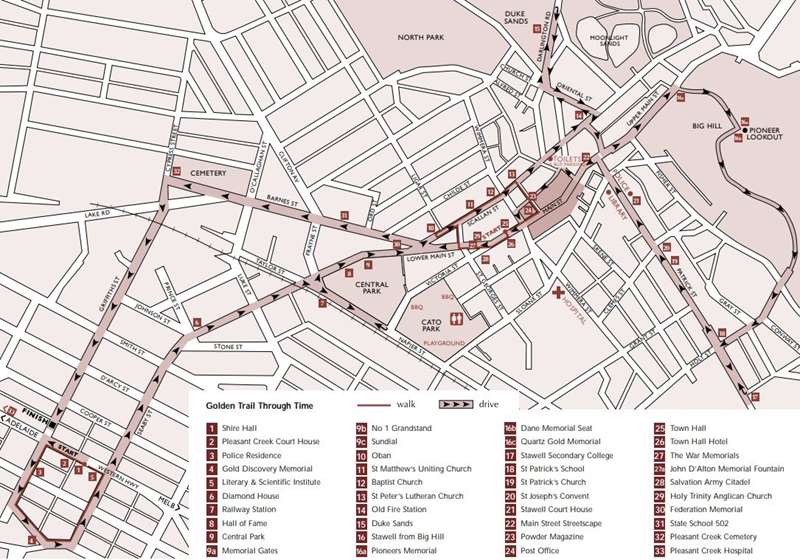
Download the Stawell Cultural Heritage Trail Map
1. Shire Hall
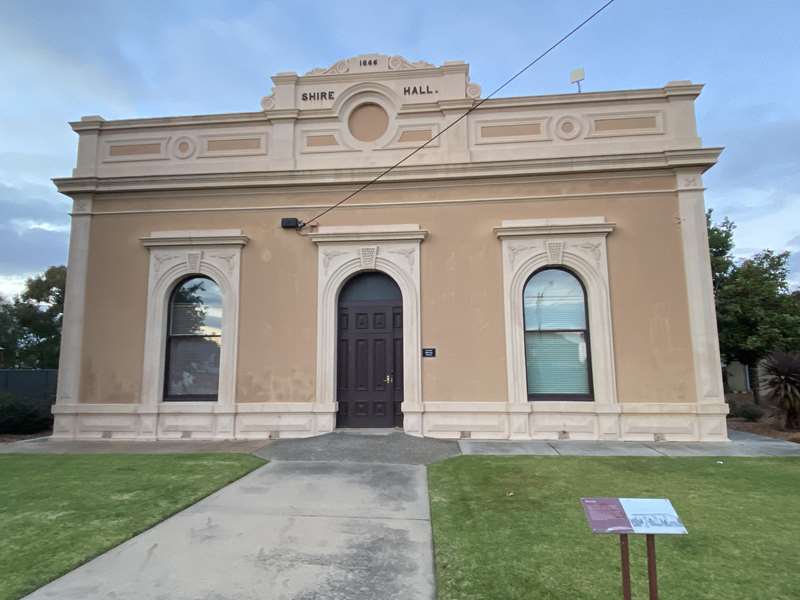
The two front rooms of this Shire Hall were built in 1866 and the two back rooms were added in 1873 and are a perfect match. In 1962, additions and renovations were made. The building was used to administer the Shire from 1866 until amalgamation in 1995. Restored in 2011, the hall is used for Council and community meetings.
2. Pleasant Creek Court House
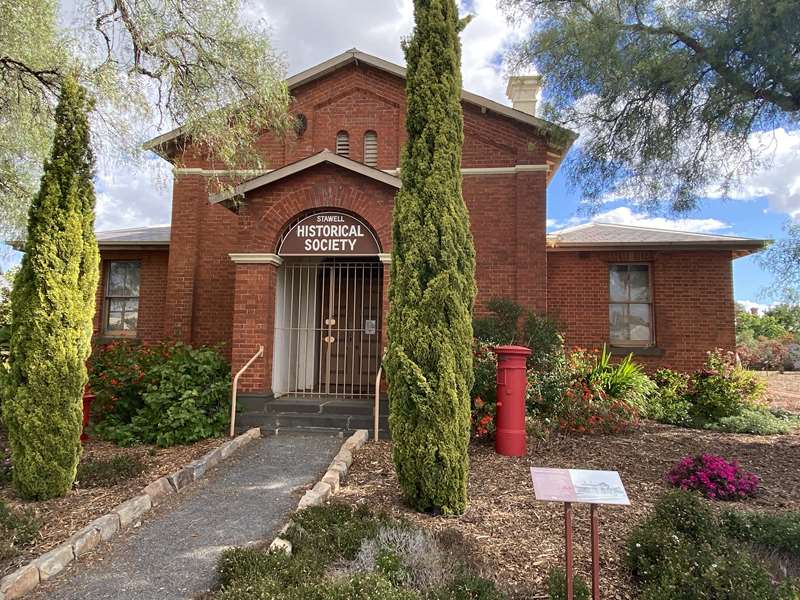
Built in 1860, this was the first of Stawell's public buildings. It was used for all Courts and was presided over by the Gold Fields Warden, who was also the Police Magistrate, and the local Justices of the Peace.
By February 1878, the building was considered too remote from the main area of mining and business activity, which was then around Big Hill. The present Courthouse was opened in Patrick Street in 1880. This building then became Police Barracks and later a private residence. The Police Department occupied the land to the corner of Griffith Street. The gaol, built in 1860, is now on private property. The Town Council purchased the building in 1973 which was then restored.
The Stawell Historical Society became the custodians in 1981 and the building now houses a large collection of Stowell and district records and memorabilia. Heritage Victoria listed.
3. Police Residence
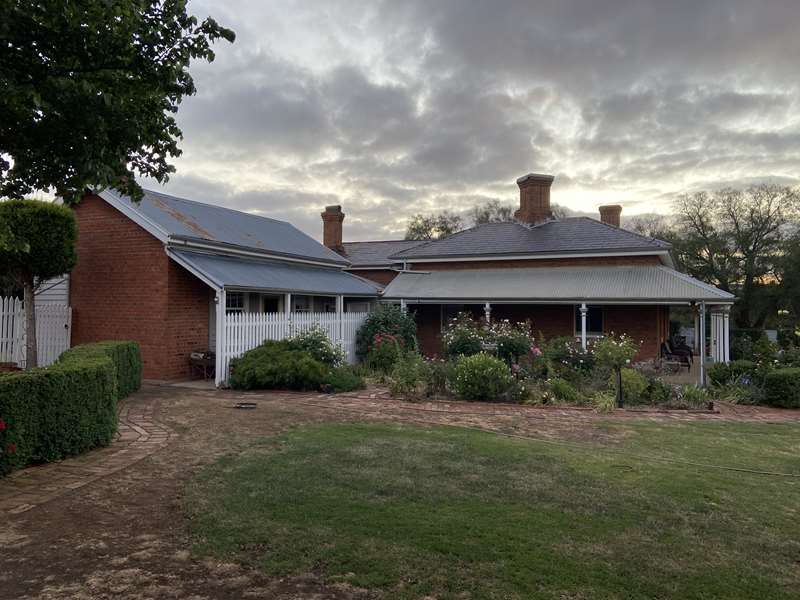
Built in 1869 as the residence of the Superintendent of Police of the Wimmera District, this elegant house and grounds were a feature of early Stawell. The house, then called "Range View" was the scene of many social occasions. In 1873 the rooms on the west side were added as a servants room and laundry and a picket fence was built. Some of the original trees remain. The Police Department occupied this building for one hundred years. Later this became the office and residence of the Stawell West Policeman, and was last occupied by police in 1969. Private owners have restored the house, fence and garden. The original four-stalled stable for the Police Superintendent is now on private property across the lane at the rear. This building is listed by Heritage Victoria as being the only purpose built Police Superintendent's house remaining in Victoria.
4. Gold Discovery Memorial
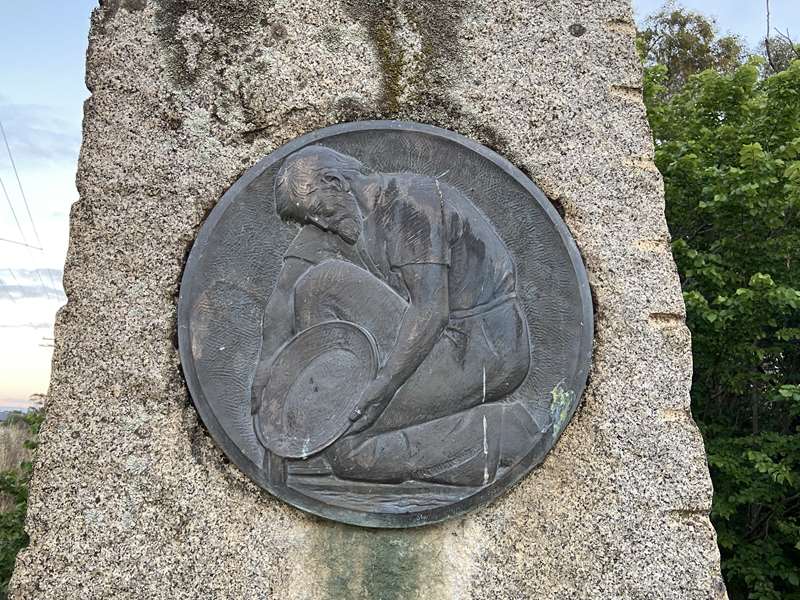
Gold was first discovered in Pleasant Creek near this memorial in May 1853, by William McLachlan, a hutkeeper for shepherds. This small find drew prospectors to the area which resulted in the large gold rush of 1857. Discoverers of new goldfields were usually rewarded by the Gold Fields and Board but McLachlan's claim was disallowed as he was not directly responsible for the later finds. McLachlan, a bachelor from Scotland, is buried in the Pauper Section of the Stawell Cemetery.
The Stawell Progress Association erected this memorial, one hundred years after the gold discovery. Local stonemasons, G H Robson & Sons were the designers and builders.
5. Literary & Scientific Institute
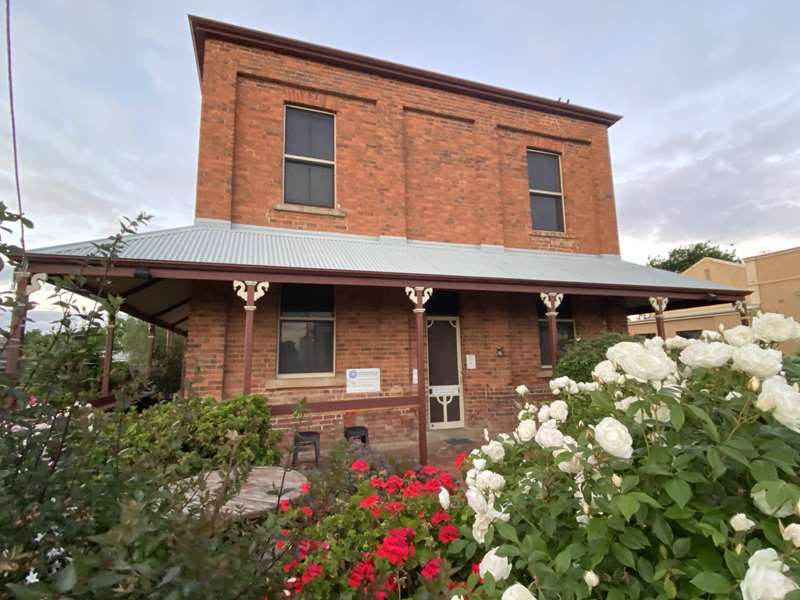
This two story building of two rooms was built in 1868. The interior consisted of a reading room and library on the ground floor and the upstairs room was used as a lecture room and classroom. The building, of hand made red bricks, is of unusual design having single brick cavity walls and no internal supporting walls. Heritage Victoria listed.
A Committee of residents of this area banded together to erect this building in 1868. It was intended to bring all the advantages of a Mechanics Institute to the 1858 proclaimed Township of Stawell.
Newspapers, some from England, and some 400 books that were donated by various gentlemen were housed here for the benefit of local residents. The two-storied building of two rooms cost the subscribers about 300 pounds. The interior consisted of a reading room and library on the ground floor and the upstairs room was used as a lecture roman and classroom.
The building was sold in 1876 to become a private home after which time the verandah was added.
6. Diamond House
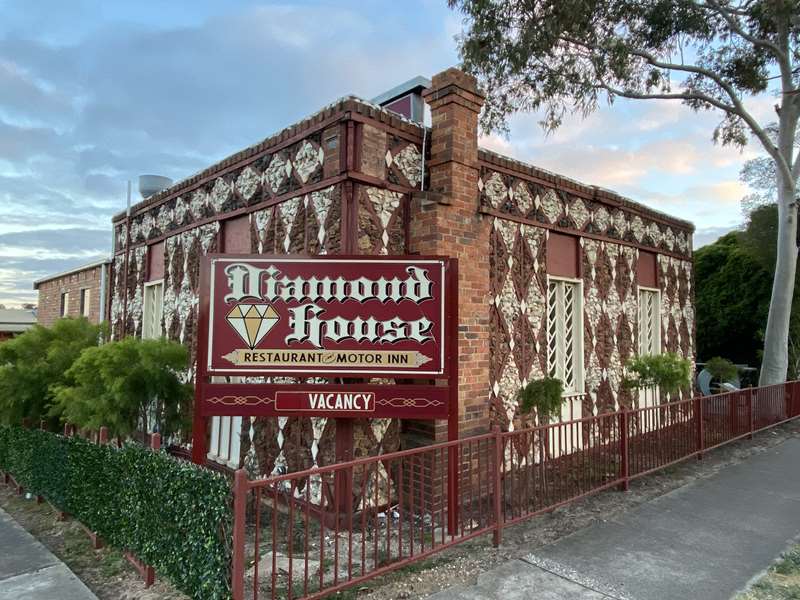
Mr John Hearne built this unique house as his private residence. Construction from 1866 to 1868 showed Mr Hearnes considerable skill and patience. Each wall of this square, flat roofed building had to be planned accurately to provide for the diamonds. The main diamonds are surrounded by two inch wooden slats, on the corners of which are smaller diamonds. Each main diamond includes brown stones and white quartz from Church Hill directly opposite. The stones had to be cut and carefully fitted to maintain the uniformity. It was said that not a nail of any sort was used in construction. The natural insulation of the structure is excellent.
In 1982 it became the Diamond House Restaurant and the original stone work remains untouched.
Listed by National Trust in February 2000 for its historical and architectural significance.
7. Railway Station

The railway line came to Stawell in January 1876. The Stawell station, with the Stationmaster's residence above, was built at a cost of nearly 2000 pounds. The Governor, Sir George Bowen performed the opening ceremony on the 25th May 1876. The contract for the Goods Shed, Outside Platform, and a 5 ton and 12 ton crane was let later that year. New engine sheds and bricked engine pits were constructed near the Griffith Street crossing in 1898 and were moved to Ararat about 1927. Many local carriers had their depots in the station yards facing Wakeham Street making it a very busy scene.
On this Railway property were tennis courts and also the Railway Institute which was opened in 1922. The pedestrian bridge which crossed the lines from opposite Victoria Street was removed in 1991. The Railway Station closed in 1993. The former residence now houses the Stawell Railway Station Art Gallery.
8. Hall of Fame
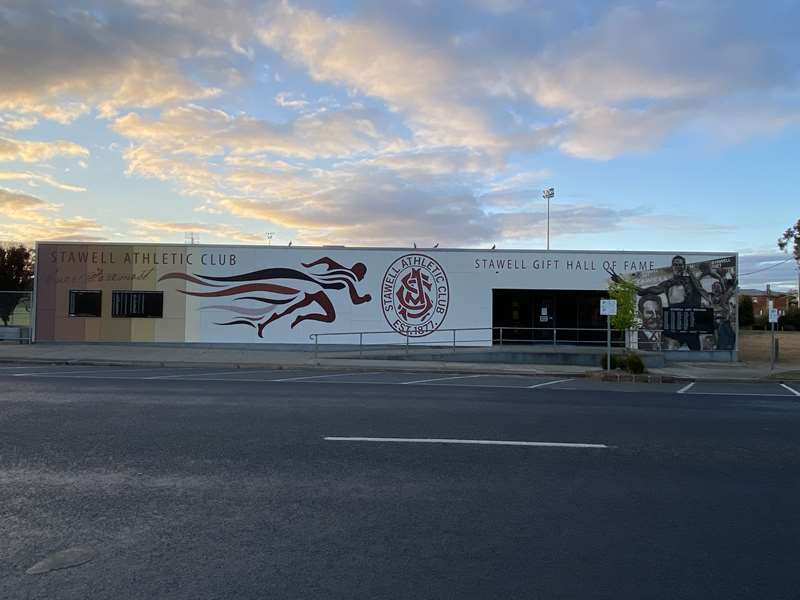
Opened in 1987 featuring memorabilia of the Stawell Athletic Club's history and continuous videos of past carnivals. The Stawell Athletic Club, formed in 1878, has a worldwide reputation for the precision with which the sports are run. The Easter Gift is the richest professional sprint race in the world run over 120 meters. Since 1986, the carnival has been open to professionals and amateurs and attracts both national and international competitors.
9. Central Park
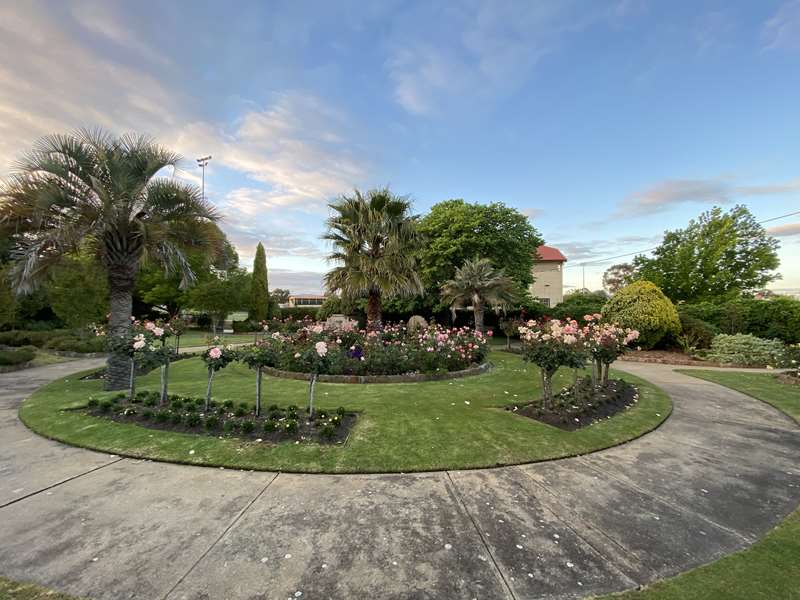
Originally a cricket ground in the 1860s. The Stawell Athletic Club (1878) moved the Easter foot races to this location In 1898, now famous for the Easter Stawell Gift. Central Park is also home to football, netball and cricket. Heritage Victoria listed.
9a. Memorial Gates
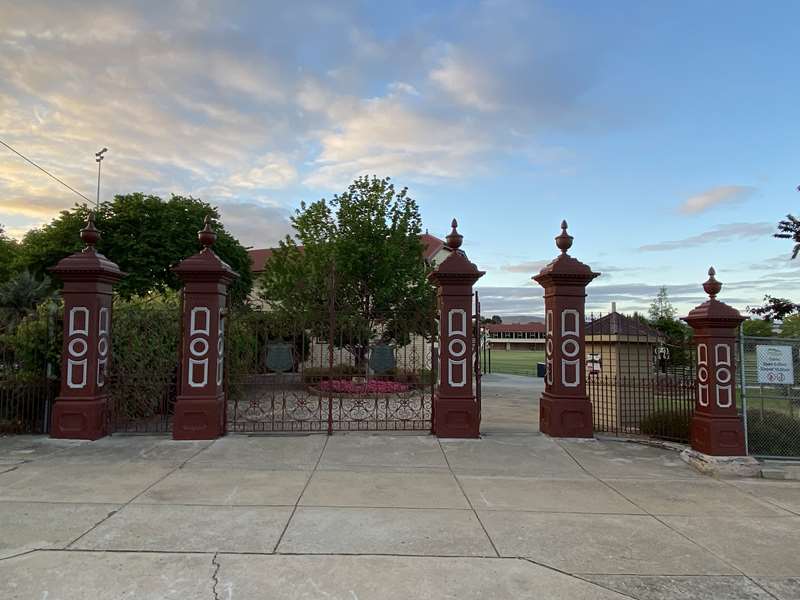
These magnificent gates, designed and built at the local G. Kay & Co foundry, were erected in 1903 to commemorate those who served in the Boer war.
9b. No. 1 Grandstand
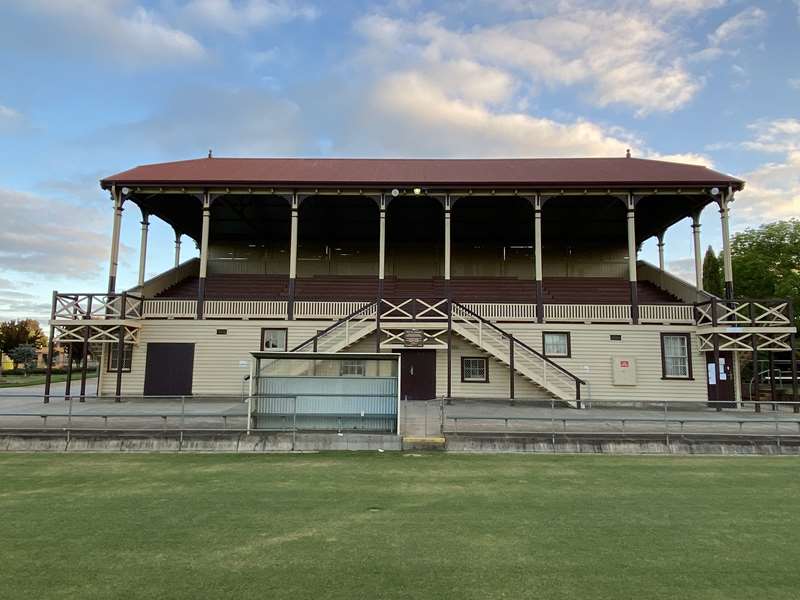
This grandstand was built for the 1899 Easter Sports. This stand was restored in 1990/1991 and with access to the original building plans, the stand is now as near as practicable to the original.
9c. Sundial

Situated In the garden at the rear of the grandstand, this memorial of Grampians freestone was unveiled on May 29th 1931 by Miss J Simmons, in memory of her father an owner of the Oriental Mine.
10. Oban
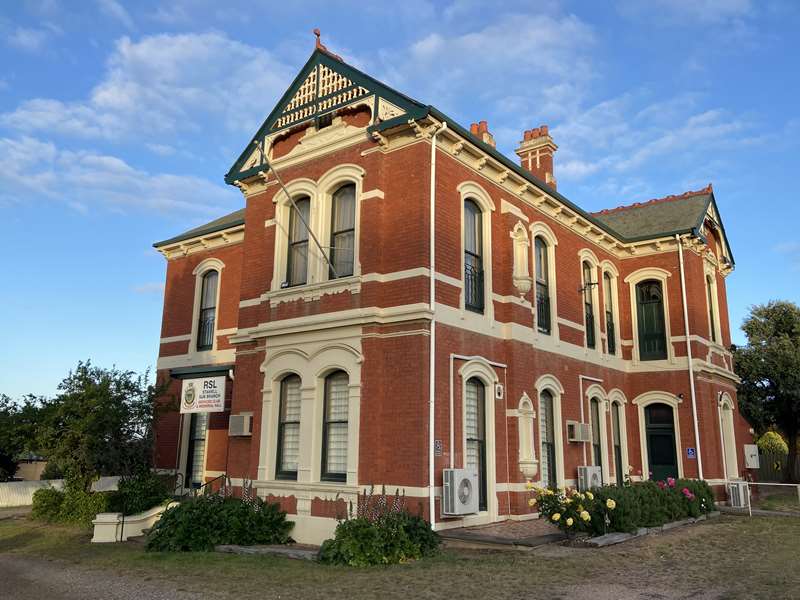
Built in 1898 as a private home. Features included a balcony of hand turned wood lacework, a staircase window of stained glass, marble mantelpieces and verandah tiles from South Australia, garden and greenhouses. The Returned Services League purchased the building in 1948.
11. St Matthew's Uniting Church

This landmark of Stawell was built as St Matthew's Presbyterian Church and was opened with a special dedication service on 11th April 1869. St Matthews was built at a cost of a little over 2000 pounds, and an anonymous donor at a cost of 1352 pounds paid for the tower and spire. The 40,000 bricks needed were purchased for 35 shillings per 1000. The last brick was laid on the 148ft spire on 10th March 1869.
Earlier Presbyterian services had been held on the goldfields in tents and in 1860, a church was built in Church Street that had iron sides and a shingle roof. A pipe organ was dedicated in February 1921 as a Peace Thanksgiving Memorial after the 1914-18 war.
12. Baptist Church
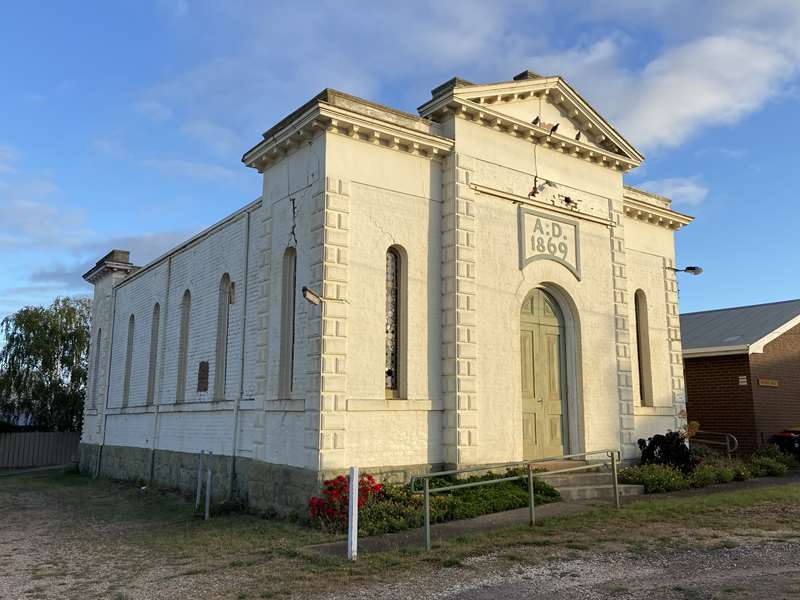
Numerous Welsh Baptists were among the early mining population and there had been two Baptist chapels at Pleasant Creek from 1859 to 1869 - one Welsh and the other English. In 1869 the Welsh chapel closed and this Baptist Church was built. At the dedication on 6th February 1870, five services were held - two were in Welsh and the other three in English.
Members of this church were known for their Welsh singing at their services and they had a renowned choir. The cost of the church was met by contributions from the congregation and a member who had benefited from some of Stawell's gold liquidated the remaining debt.
13. St Peters Lutheran Church
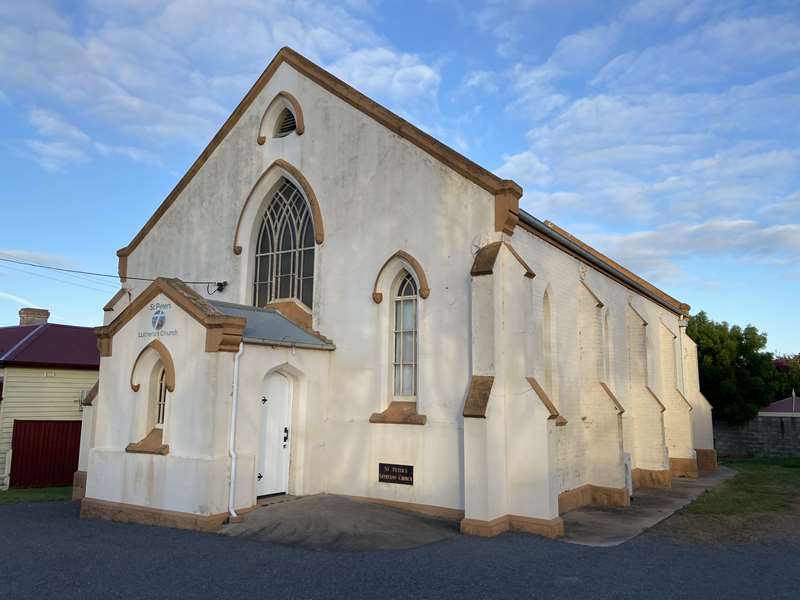
This church was built as the Congregational Church in 1874. Two groups of the Congregational Church were in Stawell in the 1860's - the English and the Welsh Independents.
They came together a few years after, and on 13 September 1874, this substantial church was opened. It accommodated 250 persons and cost 800 pounds. It was also the first church in Stawell to have gas lighting. The newly formed Lutheran Congregation of Stawell in August 1957 purchased the building. After extensive renovations, the building was dedicated on 28th September 1958 as St Peter's Lutheran Church. An organ donated by a church member, and classified by the Organ Historical Trust of Australia as a rare example of a William Hill chamber organ was installed in this church in 1969.
14. Old Fire Station
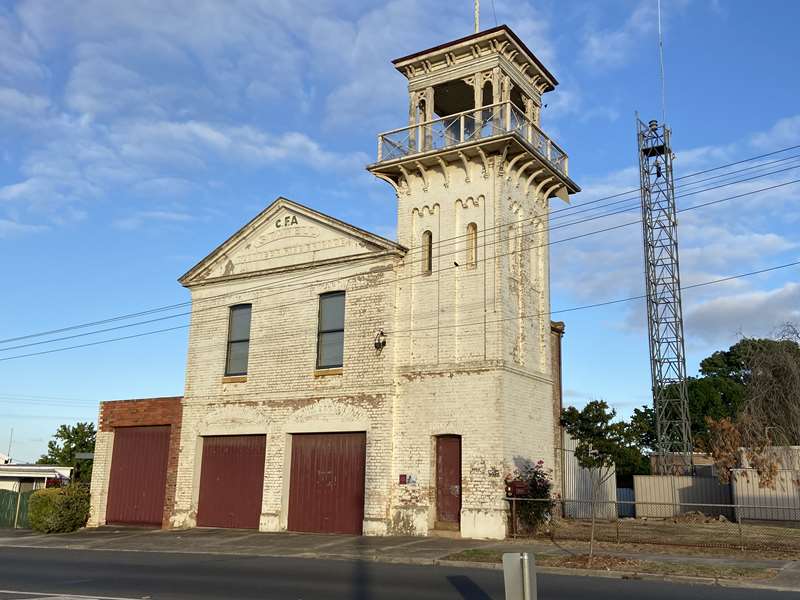
The tower of the Fire Station was built first, to house the large fire bell that had been cast in England and was then the largest bell in the colony. This Fire Station was opened in 1883. The bell is now displayed beside the old fire station.
15. Duke Sands
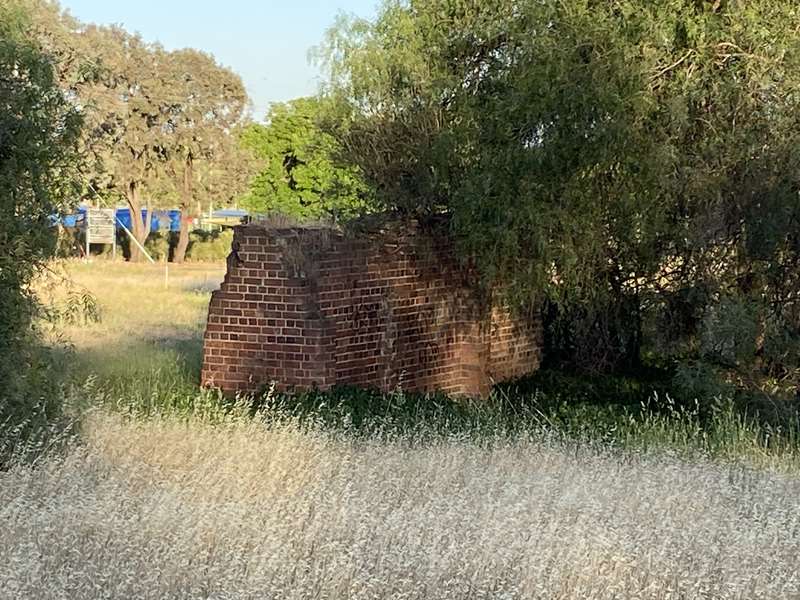
This area was the site of some of the richest mines in Stawell. The Pleasant Creek, Cross Reef Company's mine, on this site, was No 8 on Victoria's list of richest mines. Part of the brick foundation of their winding engine remains here. This winding engine was christened "The Duke of Edinburgh" during the time the real Duke was visiting Victoria. The name became popular with the miners and so the mine itself was locally known as "The Duke" and The Duke Sands are what remains.
Across the road to the right are the remains of the Magdala-cum-Moonlight mine which was No 10 on Victoria's list of richest mines and the "Oriental" mine site.
16. View of Stawell from Big Hill
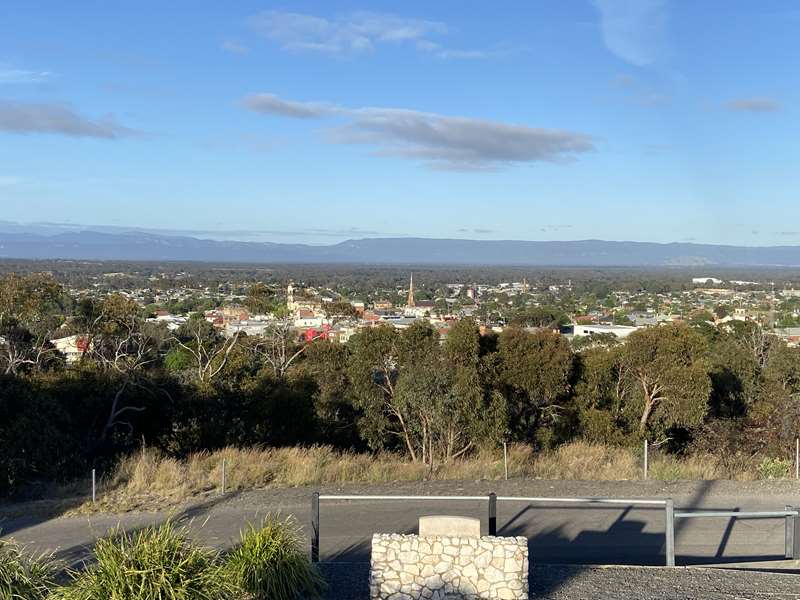
The photograph at this site, taken in the 1880s shows the view of Stawell from Big Hill at the time. The mining scene in the foreground is of Scott's Open Cut with the poppet heads and whims marking the sites various mining shafts. In the background is the site of the St George Crushing Battery with its dam to the left and its tall chimney to the right. The Black Range and the Grampians are in the background. The western slopes of Big Hill were the scene of the rich quartz mines which stretched for about 2kms from the Wonga Mine in the south-east to the Three jacks mine in the north-east.
16a. Pioneers Memorial
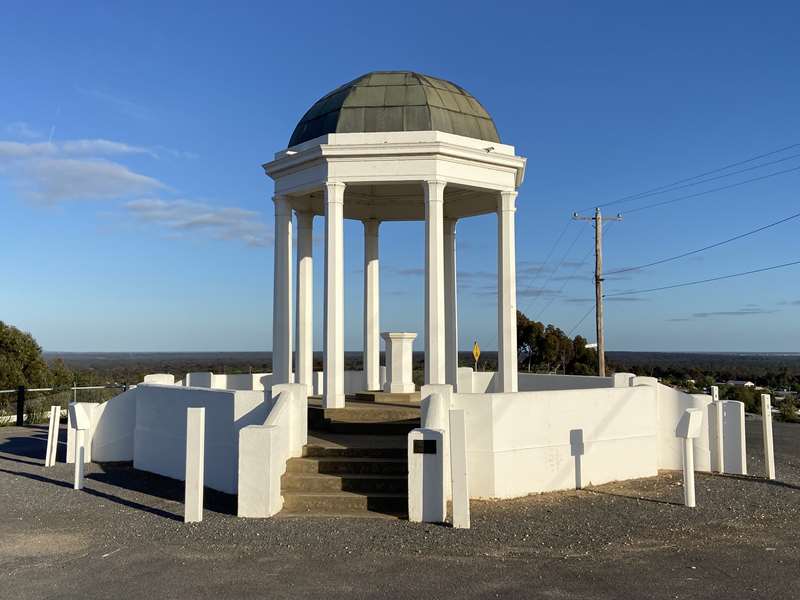
This memorial was erected on Big Hill in 1938 to honour the early residents of Stawell.
16b. Dane Memorial Seat
This seat was erected in memory of Robert William Dane who came with a party in June 1856, and opened a prospect on the Big Hill. Mrs Dane was the first white woman to set up a home there and their daughter was the first white child born on the field. Lillian Dane had the seat erected in honor of her grandfather in the 1950s.
16c. Quartz Gold Memorial
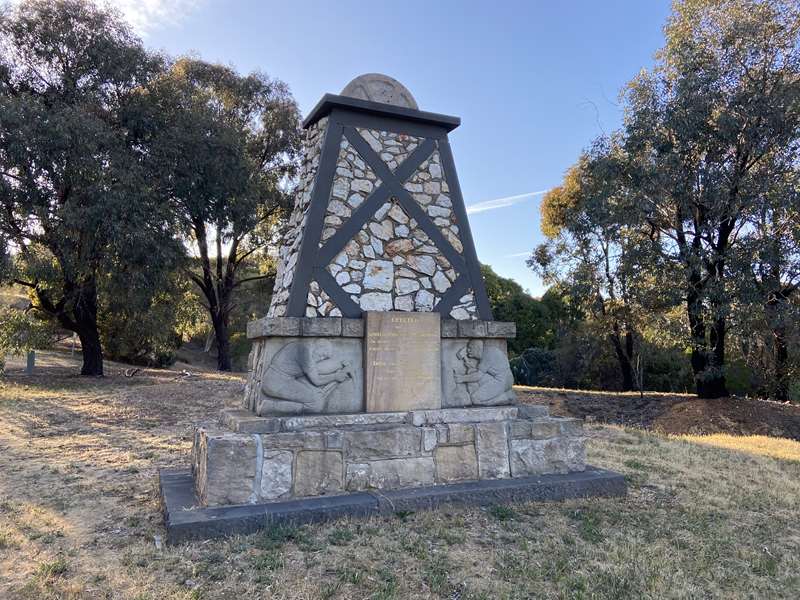
Just inside the arboretum at the foot of Big Hill, is the Quartz Gold Memorial. This memorial marks the location of the site of a very rich quartz crushing in 1856 when Dane & party put their first lot of selected stone through the Berdan Crushing machine which yielded 49ozs to 54ozs to the ton. Erected by the Stawell Progress association in 1953 it is constructed with local quartz stones overlaid with concrete crosspieces to represent poppet heads.
17. Stawell Secondary College
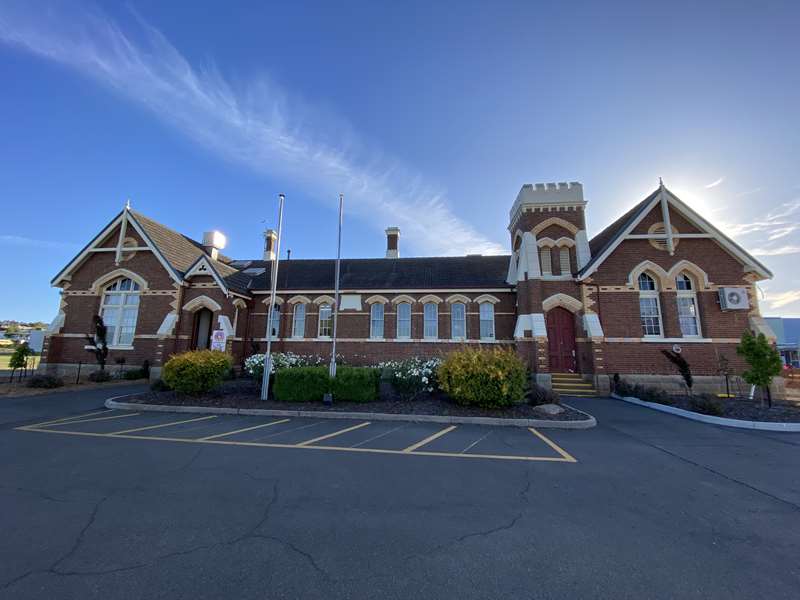
The original building in this present complex was opened in 1878 as the Stawell East State School No. 1986. The school served the miners' children until 1911 and on 26th January 2012 was reopened as the Stawell High School.
18. St Patrick's School
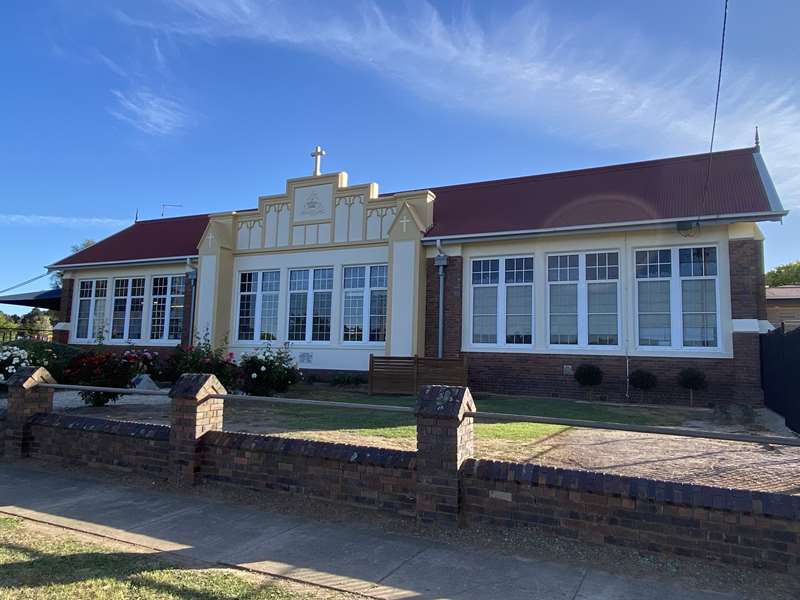
Catholic sponsored education was established in 1858 on the goldfields. This school No. 782 opened in 1934, replacing several previous Catholic schools.
19. St Patrick's Church
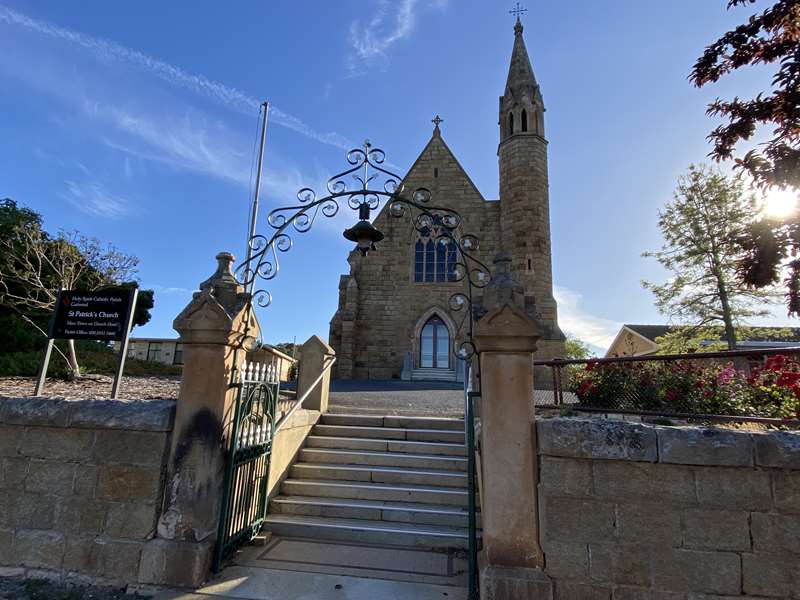
Dedicated on the 30th March 1873 this Gothic structure has 30 inch thick walls. The church is constructed of Black Range granite faced with Grampians freestone. The bell tower is 70 feet high. The sanctuary and sacristy were added during 1927. This building contains beautiful statues and a marble altar imported from Italy and constructed by Italian workmen. A foundation stone was laid on the right external wall of the church.
This present day complex of Catholic buildings in Patrick Street comprise the Convent, Parish Hall, St Patrick's Church, a Presbytery opened in September 1961 and St Patrick's Primary School.
This building replaced an earlier weatherboard Roman Catholic Church that was situated at the site of the present Courthouse.
20. St Joseph's Convent
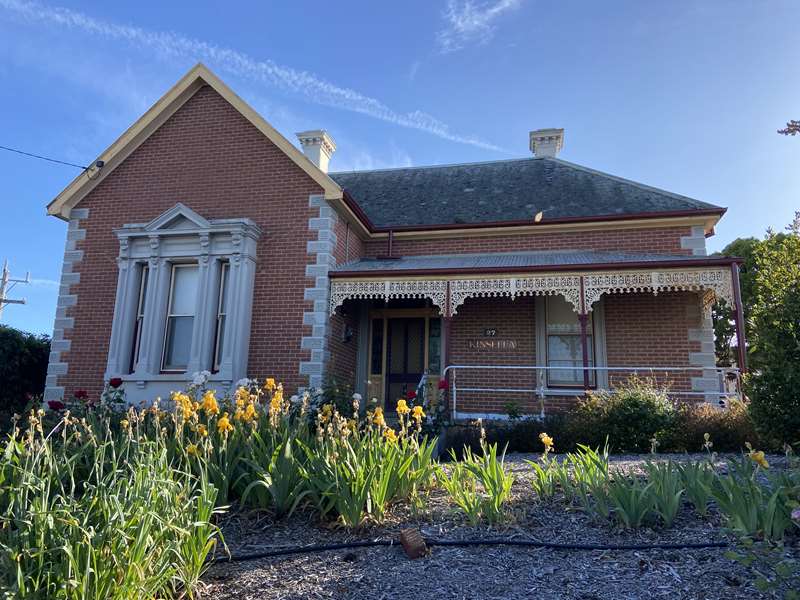
The Kinsella (Magdala-cum-Moonlight mine) family built this house in 1900. It was purchased in 1924 by the Catholic Church for the Sisters of St Joseph. This building has brick on a granite foundation with a base course of Grampians freestone.
21. Stawell Court House
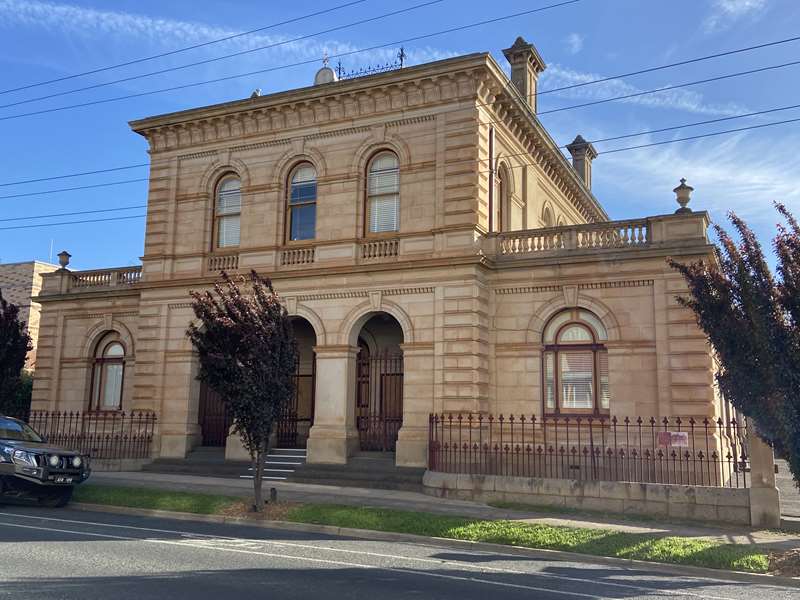
This building replaced the Pleasant Creek Courthouse and was opened in June 1880. The courthouse is faced in Stawell sandstone and is a fine and substantially intact example of a large country courthouse. The iron gates were made at the local foundry. The intact interior is also notable. Heritage Victoria listed.
22. Main Street Streetscape
(From the corner of Patrick Street and Main Street)
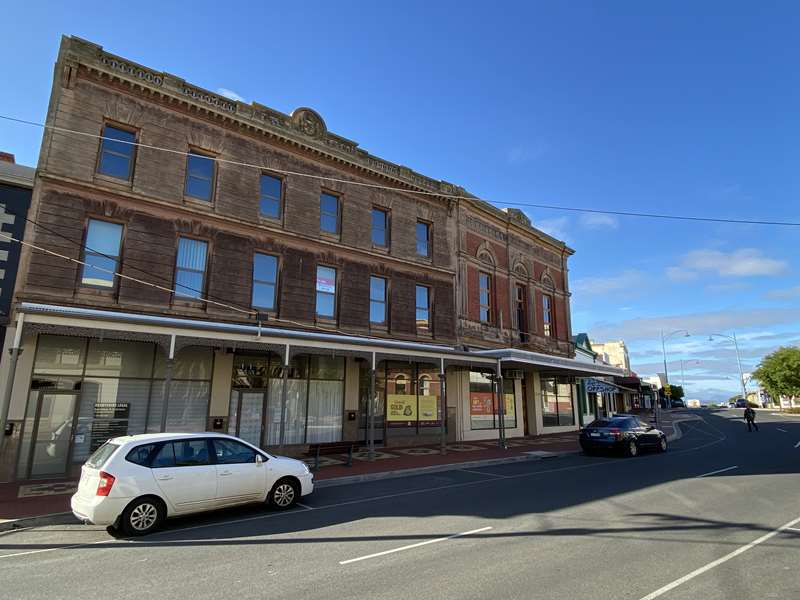
During the night of Saturday 18th February 1866, a fire started at the rear of the second shop of three where McKellar's building now stands. Ashes emptied from the stove, presumed to be damped down set a canvas fence alight. The fire burned between Patrick Street, through the flimsy canvas, bark and wood buildings and Mr. Gray Campbell's tobacconist shop (140 Goldreef Mall), in all about 14 shops. Mr. Campbell pulled down his shop to halt the fire. Most shopkeepers then lived behind their shops and many lost everything. After re-building in slightly better materials, another fire in 1874, started at almost the same position. Rebuilding took place in 1875/1876 which resulted in the much more substantial buildings you can see today.
23. Powder Magazine
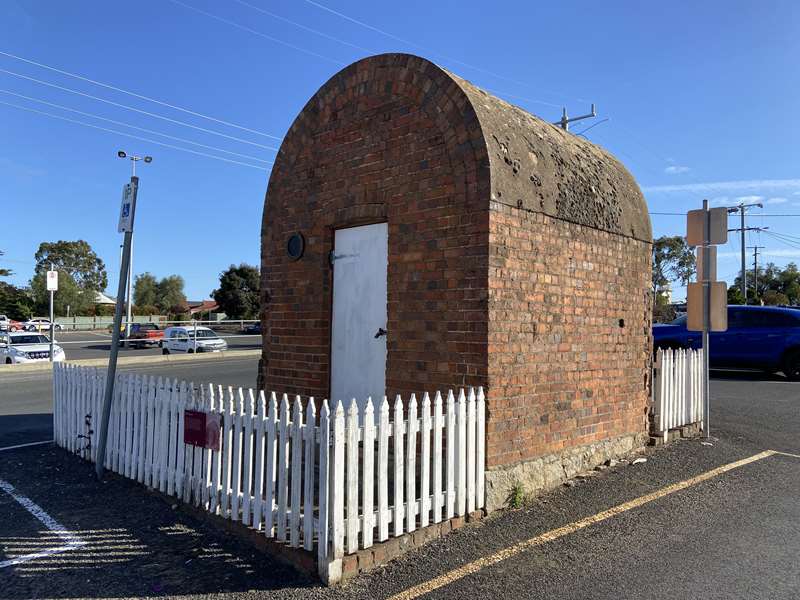
This Powder Magazine was built about 1875 for Mr Thomas Brown's hardware shop (113 Goldreef Mall). The Powder Magazine formed part of Mr Brown's brick back wall that was very high and protected by concrete and broken glass on top. The Government Powder Magazine was on the outskirts of the town in Navarre Road and when Mining Companies requested Mr Brown obtain some blasting powder for them, he did so from that Government building and it was held in this powder magazine for a short time until called for. This is one of a few powder magazines remaining today.
24. Post Office
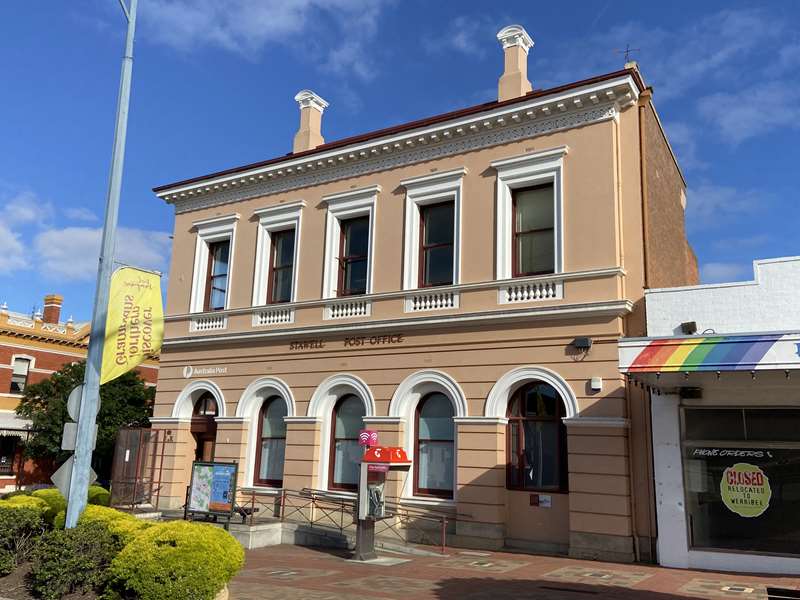
This impressive building was opened in March 1875 replacing the 1860 weather board building in the early Township of Stawell. The stucco exterior was described as modern Italian and the building had excellent proportions throughout. While the outside has not changed a great deal, the interior has been remodelled several times. The early Postmasters and their families lived upstairs.
The main room originally included the Telegraph office where operators worked at machines, sending and receiving Morse code messages. Later, alterations were made for a telephone switchboard room downstairs, with trunk line equipment upstairs. In 1965 the telephone system was converted to automatic.
25. Town Hall
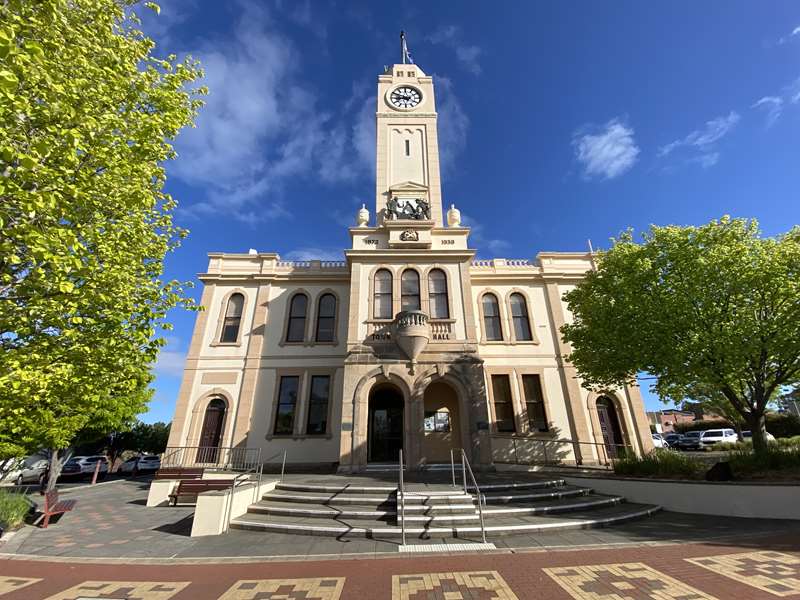
The foundation stone was laid on 20th February 1872 and the building was opened in 1873. The building has Grampians freestone facings. The main hall at the rear of the building was added in 1924 and the clock tower and clock were added in 1939. The animated figures and chimes were added in 1969 and these are activated at 9am, 12 noon and 3pm. Hanging in the downstairs foyer (near the stairs) is the Stawell Amalgamated Miners Association banner of 1878 (restored in 1990).
26. Town Hall Hotel
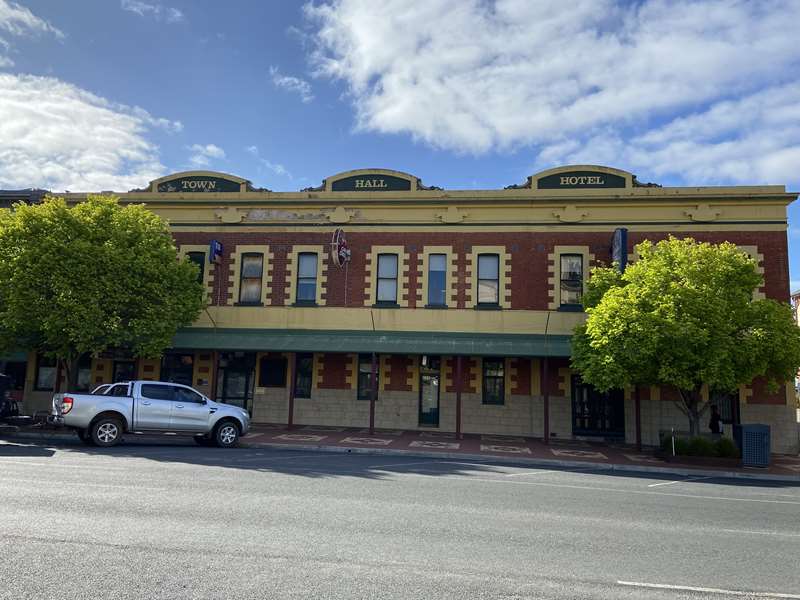
Built by William Candy, a local builder who became the first licensee in April 1874. Still licensed. this is one of Stawell's original hotels that has survived.
27. The War Memorials
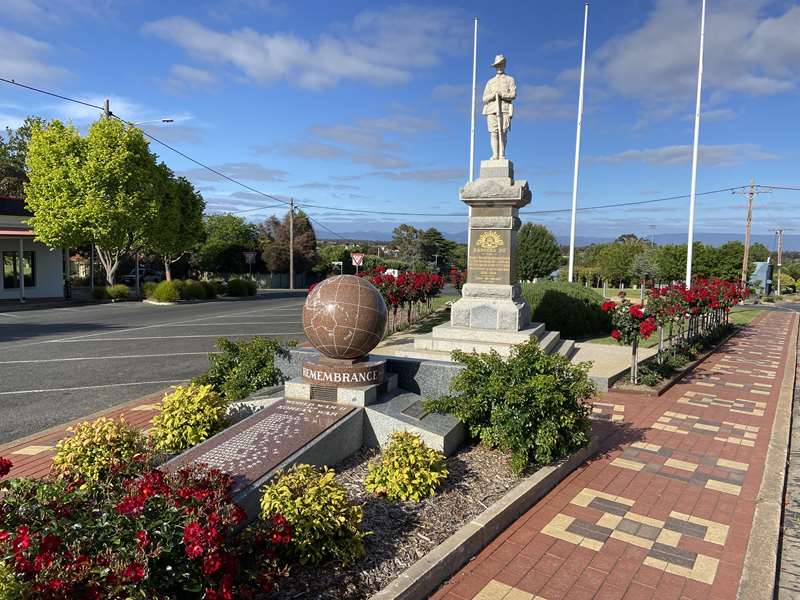
These memorials commemorate men and women of Stawell who died serving at war. The War Memorial was unveiled in November 1923.
27a. John D'Alton Memorial Fountain
This fountain commemorates the achievements of John Dalton. the first engineer of the Borough of Stawell, who designed the town's water supply.
28. Salvation Army Citadel
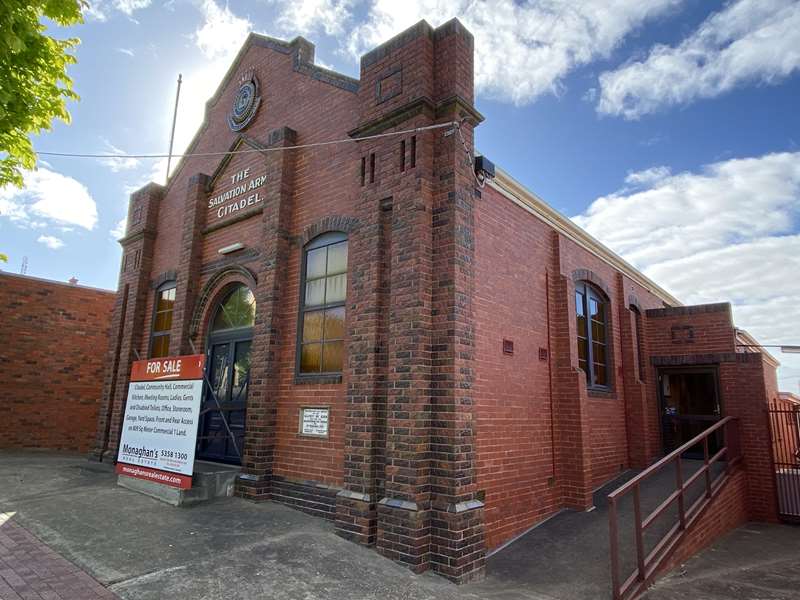
The Stawell Corps was established during May 1884. About 1886, this block of land in Main Street was donated to the Corps. A wooden building became the Salvation Army Barracks for the next 50 years and was moved to the rear to be replaced by the present brick Citadel in 1934.
29. Holy Trinity Anglican Church
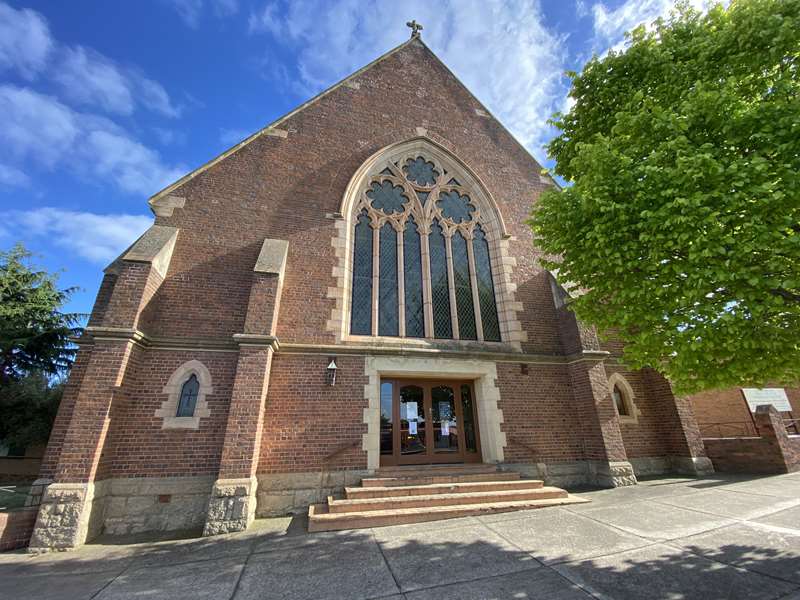
Opened on Trinity Sunday, the 26th May 1872. Additions have included memorial windows, a new pipe organ in 1894, renovations In 1912. chancel screen in 1914 and the sanctuary In 1926. The slate roof has been renewed and the side entrance of the Church is now used.
30. Federation Memorial
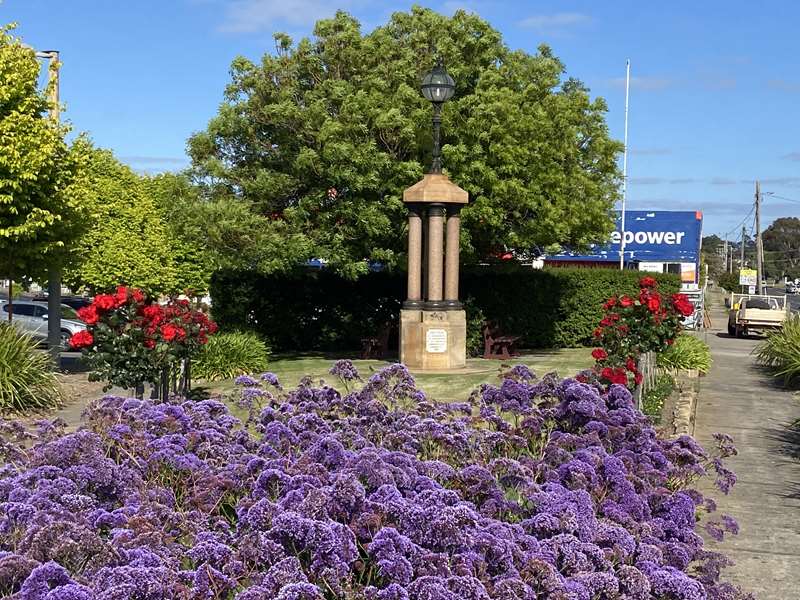
This Memorial, unveiled In August 1903, commemorates the federation of the Australian States into the Commonwealth of Australia in 1901. Four columns of Scottish rose granite swoon the dome and light. The bases and caps at black marble. It could be the only purpose built Memorial to Federation in Victoria.
31. State School 502

A Common School in Church Street preceded the building of Pleasant Creek 502 which was built at the rear of this block in Barnes Street In 1865. This section is still in use. The new front section was opened in February 1876 when 1072 pupils were enrolled. The school was built with half local (mining) and half government money.
32. Pleasant Creek Cemetery

This cemetery site was proclaimed in October 1861 although the cemetery had been in use since about the middle of 1858 when the One Tree Hill cemetery in Griffith Street was closed. The cemetery was laid out in denominations. In 1870 the Lodge, which was used for the robing of Ministers and for keeping of records, was also built. There are elaborate monuments to mine owners etc., several vaults and wonderful cast iron railings, mostly from the Stawell Foundry. There are some beautifully carved headstones by Stawell's early monumental mason, Francis Watkins, worked in granite, slate, marble and Grampians freestone. Whelan the Wrecker an old Stawellite presented the cemetery gates, that came from the Bijou Theatre in Melbourne. Part of these same gates are at the Deep Lead Cemetery.
33. Pleasant Creek Hospital
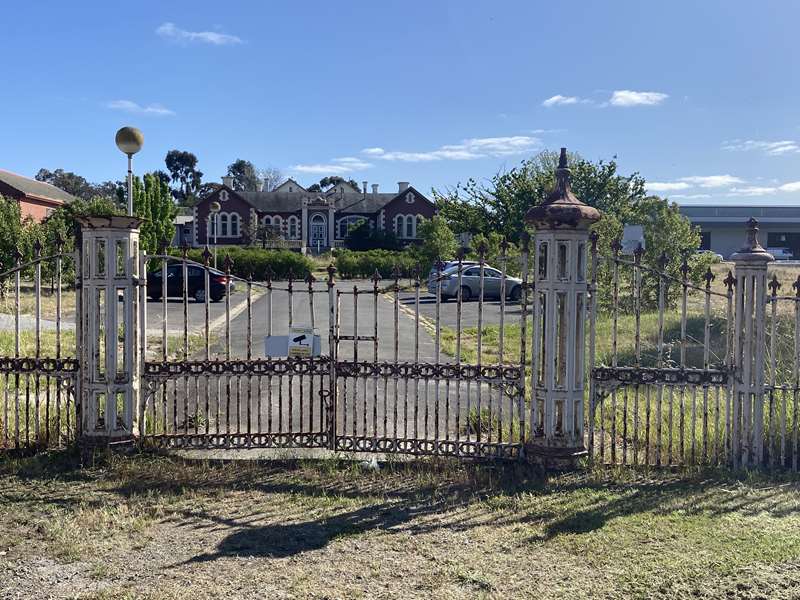
(Visible from gateway on Western Highway) Located 3 km from Stawell on the Western Highway.
Opened 21st June 1861, this hospital replaced the tent hospital of the goldfields. It was the only hospital between Ballarat and the Murray at that time. In 1916 the name was changed to the Stawell Hospital. In 1934 this complex was sold to the Health Department and became the Pleasant Creek Special School for children (until 1999).
Photos:
Location
63 Main Street, Stawell 3380 View Map
Web Links
→ Stawell Cultural Heritage Trail Brochure (PDF)








